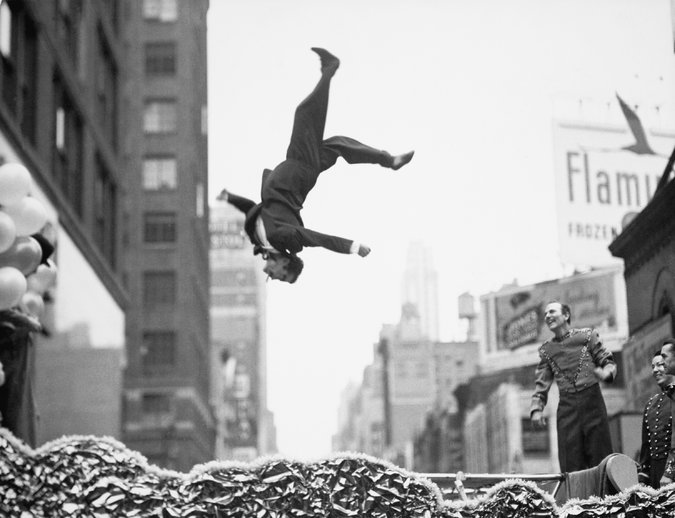It can be yours

“New York, 1950s,” by Garry Winogrand. The Estate of Garry Winogrand, courtesy Fraenkel Gallery, San Francisco
From today’s New York Times, Bill Hayes on art:
When you go — not if, but when (and soon, by the way; the show closes Sept. 21) — I suggest you bring a thesaurus. Because it wasn’t long before we found words failing us. An image of an acrobat caught midleap on a Manhattan street, for instance, struck the three of us as the epitome of “amazing.” So did another photo. Then another. Upon seeing the first few dozen of the more than 175 prints on view we pledged that we would not use that word to describe every single photo. Beautiful, incredible, joyful, strange, very sad — we made it as far as the second room before we were back to the A’s.
“It is just so… amazing,” said Katy, who’s 18 and an aspiring photographer, as if she’d been rendered helpless by yet another example of the Bronx-born artist’s particular genius for street photography. I nodded in sympathy. In a world plagued by intractable problems — police shootings, Ebola spreading, spiraling civil wars, planes falling from the sky — lacking sufficient synonyms for a work of art seemed a good one to have.
When we reached the last room, I asked Katy which picture was her favorite. She led me back to the one that had stumped her in the synonym department. Her sister, Emily, who’s 14 and had been off wandering through the Met’s collection of European paintings, then showed me her favorite piece in the museum: a Monet water lily painting (the first she’d ever seen) from 1919.
This is when I let each girl in on a secret: It can be yours. No different from falling in love with a song, one may fall in love with a work of art and claim it as one’s own. Ownership does not come free. One must spend time with it; visit at different times of the day or evening; and bring to it one’s full attention. The investment will be repaid as one discovers something new with each viewing — say, a detail in the background, a person nearly cropped from the picture frame, or a tiny patch of canvas left unpainted, deliberately so, one may assume, as if to remind you not to take all the painted parts for granted.
Comments are currently closed.